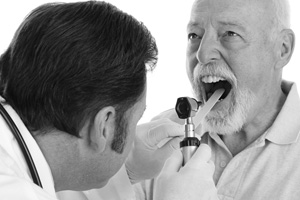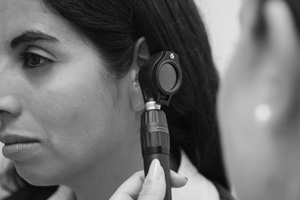View the complete list of conditions
How Do I Know if My Nose is Broken?
Many people are hit in the nose or experience other blunt force nose trauma. Common causes of a broken nose and nose trauma include falls, vehicle accidents, contact sports, collisions with objects or physical fights. If it happens to you, after the initial shock and pain, you might wonder if your nose is broken (nasal fracture) and whether to seek medical treatment. Prompt evaluation and treatment (within the first few days) can help avoid long-term complications or more extensive procedures later. There are several common ways to tell what a broken nose looks or feels like. Here are some signs to help you know if you have broken your nose:
- Bloody nose
- Pain when touching the nose
- Swelling and bruising around the eyes and nose
- Crooked or misshapen nose
- Trouble breathing through the nose
- Mucus discharge from the nose
- Both nasal passages feel blocked
- Crackling or crunching sound when touching the nose
A more severe injury might require emergency medical attention. These symptoms include:
- Clear, watery fluid draining from the nose
- Trouble breathing
- Bleeding that will not stop
- Severe headache
- Change in vision or balance
- Neck pain
- Vomiting or loss of consciousness indicating a head or neck injury
Can a Broken Nose Cause Sinus Problems?
A broken nose can lead to sinus problems and other long-term functional issues. The severity and type of break will determine what kind of treatment is required and the long-term outlook for health and lifestyle problems related to the injury. Some fractures are minor and will heal with few issues. Other fractures, especially multiple fractures and those in which the bone is displaced, should be treated to prevent the bones from setting in a deformed way. In addition to sinus infections and disfigurement, there are other complications from nasal fractures, including:
- Ongoing pain and nosebleeds
- Sleeping and snoring issues
- Perforated or deviated septum
- Congestion
- Breathing trouble
- Change in size and shape of the nose and nostrils
- Risk of other infections such as meningitis
Treatment for a Broken Nose and Ways to Repair a Broken Nose
Treatments for a broken nose depend on how severe the break is and whether there is damage to surrounding areas. Knowing what to do for a broken nose and what to avoid is important. Treatments and broken nose repair can include:
- Ice and Over-the-Counter Pain Relievers – Follow your doctor’s instructions for safely applying intermittent ice packs to relieve pain and swelling. You may also be instructed to take over-the-counter pain relievers such as ibuprofen or acetaminophen. Always ask your doctor before taking these medicines because they should be avoided if you have certain fracture complications, or medical conditions.
- Draining Septal Hematomas – Hematomas (pools of blood) may develop on the septum (the wall separating the nostrils inside the nose). These must be drained to help prevent a hole from developing in the septum or the nasal bridge from collapsing, resulting in a “saddle nose” deformity. Septal hematoma drainage must be done within 24 hours of injury since tissue begins to die at that point, leading to complications.
- Manually Realigning – Sometimes, the nose can be realigned in a doctor’s office using local anesthetic. Manual realignment may be done a few days after the injury when swelling has subsided. For more severe injuries, a general anesthetic may be required. After realigning the nasal bones, your doctor will place packing inside the nose and possibly a splint and bandages outside the nose. You may also be given antibiotics to reduce infection risk.
- Broken Nose Surgery – Severely broken noses may need surgery to reconstruct and realign the nose and to improve breathing obstructions. Two common broken nose surgeries include:
- Rhinoplasty Procedure – During this surgery, your doctor will rearrange, add to or reduce the underlying bone and cartilage of the nose to restore the appearance or reduce obstructions. This procedure is also used in cosmetic surgery.
- Septoplasty Procedure – This broken nose surgery will reshape the septum (the bone and cartilage that separates the nostrils inside the nose). It may be necessary to remove, rearrange and reposition structures inside the nose to improve airflow and close holes and perforations in the septum.
Please get in touch with our NYC office if you suspect your nose is broken. Prompt evaluation and treatment with Dr. Cohen can help you avoid complications and long-term problems from a fractured nose. He can also treat issues related to noses that were broken in the past and healed incorrectly.
Conditions
Ears
Nose
- Ballon Sinusplasty Surgery
- Concha
- Deviated Septum Relief In NYC
- Deviated Septums
- Fixing a Deviated Septum
- Identifying A Deviated Septum
- How Do I Know if My Nose is Broken?
- Nasal Polyps
- Nasal Polyp Surgery
- Nasal Septums
- NYC Nasal Polyp Reduction
- Septoplasty And Turbinate Surgery
- Treating a Deviated Septum
- Treating Nasal Polyps
- Turbinate Reduction
Throat
- Dysphagia
- Leukoplakia Treatments
- Reflux Laryngitis
- Swallowing Disorders
- Treating Anosmia
- Vocal Disorders
Allergies & Asthma
- Dealing With Allergic Rhinitis
- Managing Allergies and Asthma
- How to Allergy-Proof Your Home from Indoor Allergens
Sinus
- Chronic Sinusitis Treatment
- Endoscopic Sinus Surgeries
- Sinus Headache Cure
- Sinus Infection Treatment
- Sinusitis Surgery
- Treating Sinus Infections
Sleep & Snoring
- Diagnosing Sleep Disorders
- Having Trouble Sleeping
- Home Sleep Studies
- Pillar Implants
- Pillar Treatment for Snoring
- Sleep Apnea Conditions
- Sleep Apnea Specialists
- Sleepless in NYC
- Sleep Study Diagnosis
- Can Snoring Cause Health Issues?
- Treating Sleep Apnea
- Treating Snoring
- What is a CPAP Device?





